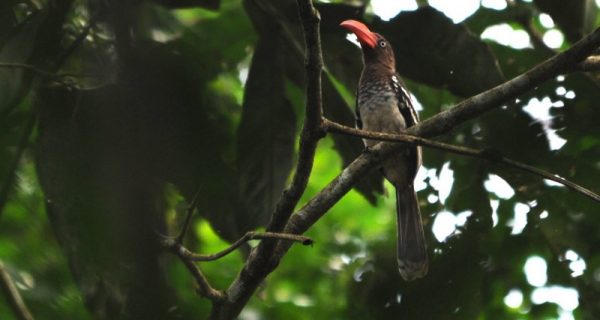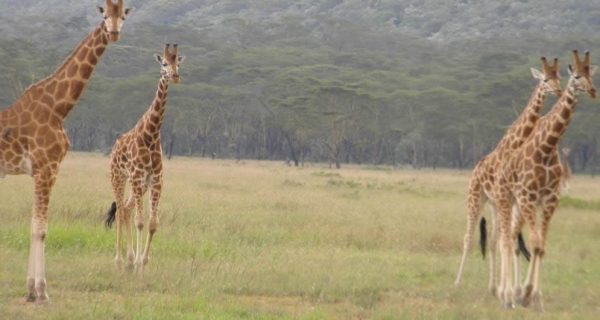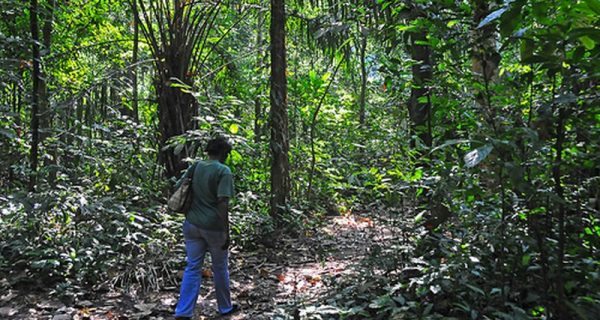Semuliki National Park Uganda
Semuliki National Park also dubbed the birders paradise is seated in the remote areas of western Uganda close to the border with the Democratic Republic of Congo and part of the ituri forest. Semuliki National Park though not with lush vegetation like the surrounding areas is an amazing place where the trappings of civilization are almost nonexistent. There’s a lot to see and do in Semuliki Park Uganda and for the latest information, Wild Jungle Trails Safaris offers a guide on the park;
Location of Semuliki National Park Uganda
The Uganda safari destination of Semuliki Park is located in Bundibugyo district in the county of Bwamba within the western region of Uganda. This is luckily one of the safari parks in Uganda that boast in being centred in one of Africa’s most ancient and bio-diverse forests- the ituri forest. The park covers 220 square kilometers and has an altitude of 670 -760m above sea level. Semuliki Park sprawls across the Semliki valley below the western side of Mountain Rwenzori and in the wet season large areas of the park may flood.
Background of Semuliki National Park Uganda
Upgraded to a national park in 1993, the now Semuliki Park was first created as Semuliki Forest Reserve in 1932. The Ituri Forest that forms the Semuliki Park floor is one of Africa’s most ancient and bio-diverse forests one of the few to survive the last ice age that was 12 – 18,000 years ago. The Semliki valley contains more features associated with Central Africa rather than East Africa. The hot springs bubble up from the depths below to demonstrate the powerful subterranean forces that have been shaping the rift valley in the past 14 million years.
Best time to visit Semuliki National Park Uganda
Thinking of when to visit Semuliki National Park? The best time to visit Semuliki Park is during the relatively dry season in the months of June – September and December – early February. The rainy season is in the months of March – May and September – November when the park receives a mean annual rainfall of up to 1700mm.
The advantage with visiting Semuliki Park in the dry season is that the trails are drier and animals stay around water holes.
In the rainy season the park can easily flood and become difficult for safari activities within the park.
Getting there/How to get to Semuliki National Park Uganda
Semuliki Park is about 378km from Kampala – Uganda’s capital via Kampala-Mubende road.
From Entebbe International Airport, the park is about 406 km with a drive time estimated of 6h 23min.
Getting to Semuliki Park requires a 4×4 WD since the road can get treacherous especially after heavy rains. The park headquarter are at Ntandi village about 4.4km from the signposted ranger post at Sempaya along the road to Bundibugyo.
Your Route to Semuliki Park Uganda
Safari attractions / what to see in Semuliki National Park Uganda

Birds as an attraction in Semuliki National Park
Dubbed the birders paradise, Semuliki Park is indeed a birding paradise with several bird species. Some of the common birds seen on a birding safari in Uganda’s Semuliki Park are the Forest Francolin, Spot-breasted Ibis, Chestnut-flanked Goshawk, Long-tailed Hawk, Red-chested Owlet, Piping Hornbill, African Dwarf Kingfishers, Red-sided Broadbill, Red-eyed Puff-back, Ituri Batis, Crested Malimbe, Red-billed Malimbe, Grant’s Bluebill, Black-winged Starling, Gabon Woodpecker, Yellow-throated Nicator, Hartlaub’s Duck, African wood owl and many more.

Hot springs in Semuliki National Park
The two hot springs in Semuliki Park are a popular attraction and must visit to Uganda tour visitors to the park. There is a female and male hot spring. The male hot spring is about 12 meters in diameter and popularly known as Bintente whereas the female one is known as Nyasimbi. The hot springs are a sign of the power of the rift valley formation process hundreds of years ago. The boiling geyser gushes out steam and bubbling water to several meters high visible even from 1kilometer away. The gushing water is hot enough to boil foods like eggs and bananas (plantain).

Wildlife in Semuliki National Park
Semuliki Park is also host to wildlife with about 53 mammal species recorded though rare to see since many are nocturnal. Some of the wild species seen in the park include the Olive baboon, Grey cheeked mangabey, Guereza Colobus, blue monkeys, White-bellied duiker, bush pigs, Zenker’s Flying Mouse, Agil squirrels such as the Fire-footed Rope or Red-legged sun squirrel and many more. Nocturnal primates include the Pottos and Galagos. Chimpanzees are more heard than seen.
Lately, a Bongo forest antelope was seen in Semuliki Park. The highly endangered western Bongo antelope was captured on camera and the first ever sighting in Uganda. Possibly on a Uganda wildlife safari to the park, tourists could come across the Bongo antelope of Semuliki Park.
Activities done in Semuliki National Park Uganda

Birding activity in Semuliki National Park
Bird watching in Semuliki National Park is one of the top activities in the park. Birding is best done in the areas of Sempaya and Ntandi with excellent sights of bird species like the Red-billed Dwarf Hornbill, Yellow throated Nicator, Great Blue Turaco, White-crested Hornbill and many more. The area around the ranger post are also a great birding destination with possible sightings of birds like the Black-shouldered Nightjars and the Crepuscular Freckled Nightjar, Nkulengu Rail, Buff-spotted Flufftail, African Wood Owl and many more. Near the forest creek, the hollow hooting of the White-spotted Flufftail is commonly heard.

Visiting the Sempaya Hot springs
The visit to the Sempaya hot springs is one of the activities in Semuliki National Park for both bird watching and a tour at the hot springs. The one hour long trail to the outer male hot spring leads through the forest where you can glimpse at some primate species like the Black and white colobus monkey and the Grey cheeked mangabey. To get to the female hot spring you take the 30 minutes hike through palm forest from the main road to the inner parts of the forest where the boiling geysers can be seen from a distance.

Forest walks and nature walks
The popular way of exploring Semuliki Park is by nature walks or walking safaris through the park to have a close glimpse of the flora and fauna. The forest walks usually begin from the Sempaya park gate and ends at the hot springs. The park has three established walking trails one of them being the Sempaya Nature trail which is about 8km long, the Red monkey track is about 11km and the Kirumia hiking trail is about 13km. All of the trails are rewarding with sights of primates, bird species and flora.
